#Michael Reaves
Text
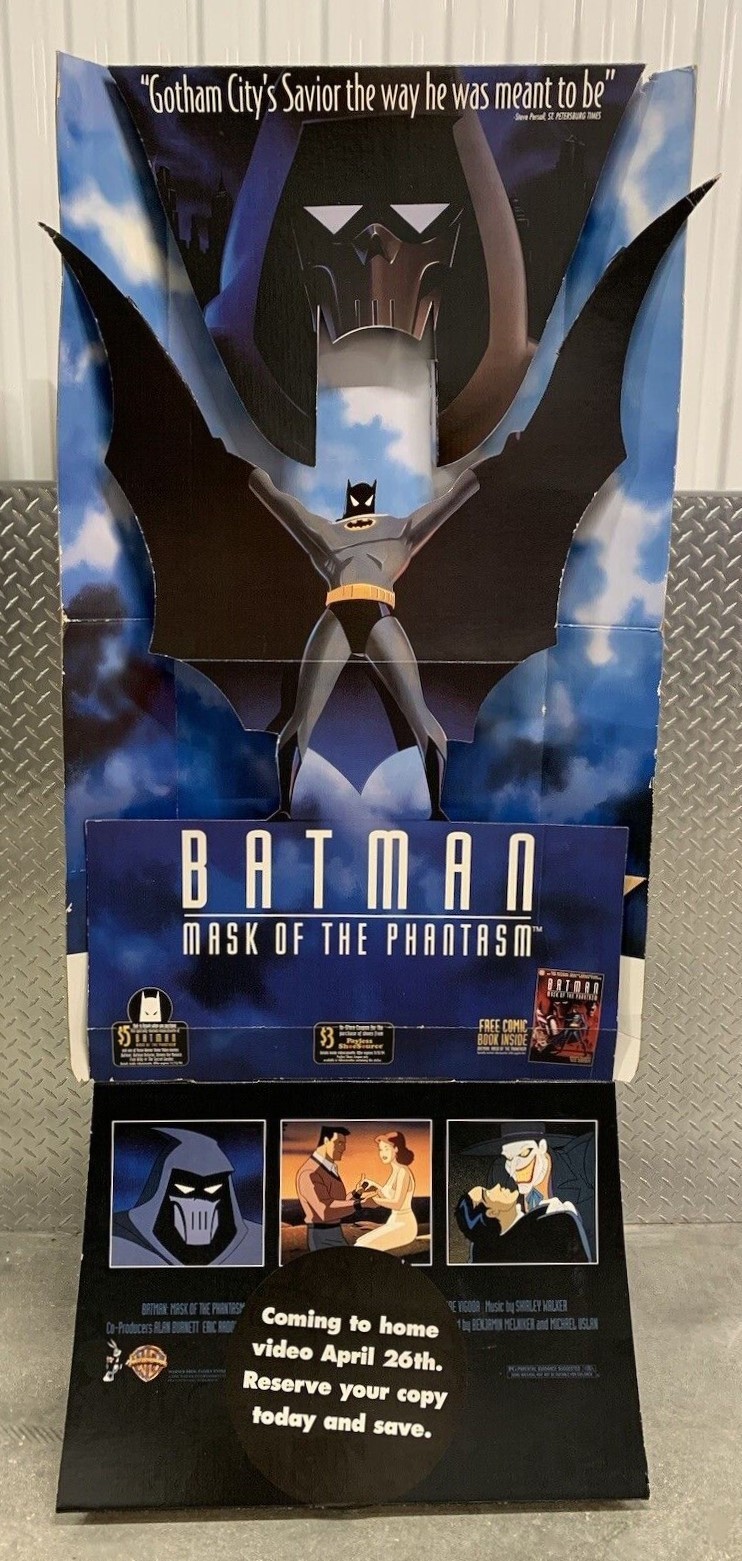
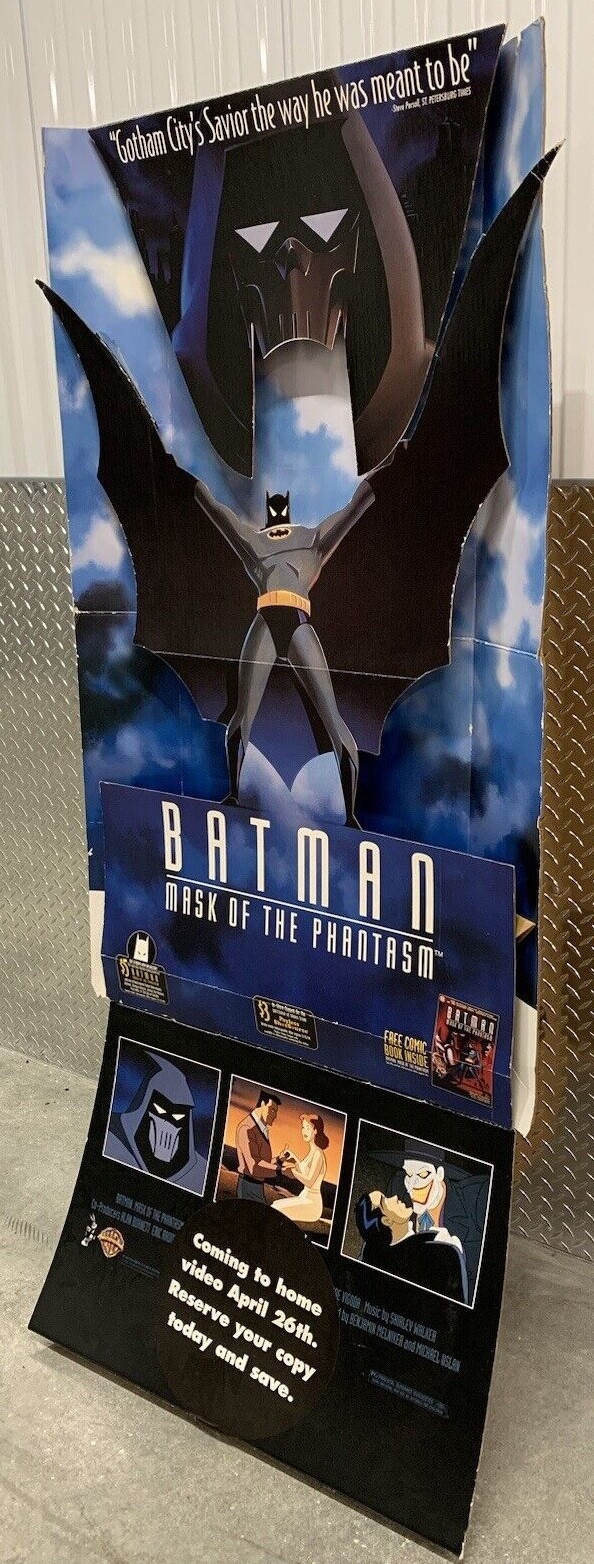
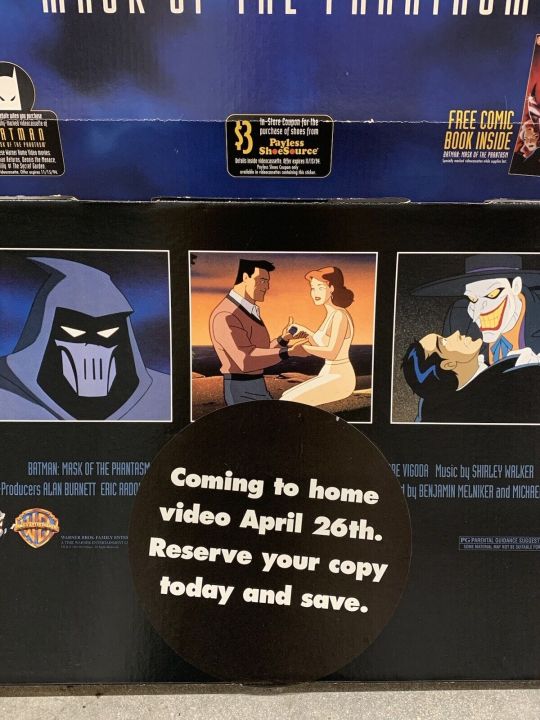
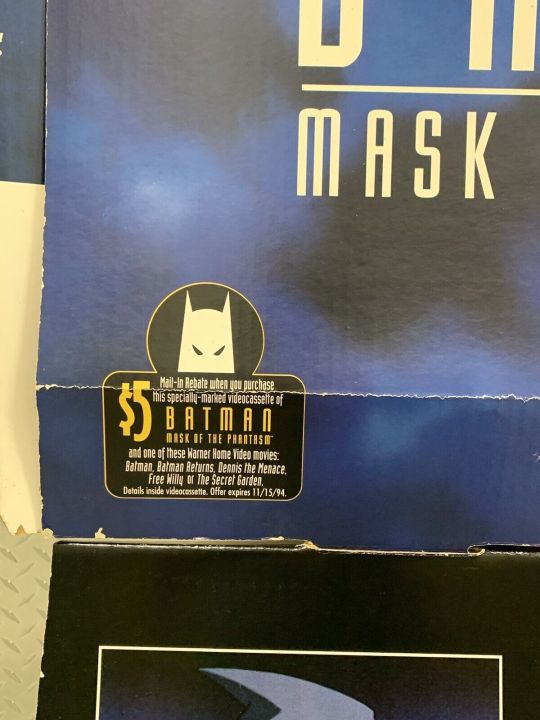

#Batman Mask of the Phantasm#Eric Radomski#Bruce Timm#Dan Riba#Frank Paur#Boyd Kirkland#Kevin Altieri#Alan Burnett#Paul Dini#Martin Pasko#Michael Reaves#Bob Kane#Bill Finger#90s
25 notes
·
View notes
Text
Barriss rose to her feet-just how, Jos could not have said. She seemed to levitate-one moment she was sprawled on the ground, and the next she stood upright. Impressive as that was, however, it was nothing compared to her next action.
As Jos watched in astonishment, the Padawan leapt across the bota field, covering a distance of at least ten meters in a single bound. As she arced through the air toward the droid, Jos saw another flash of light. At first he thought the droid had fired again, but then he realized the glow came from Barriss’s hand.
She had drawn her lightsaber.
Jos had seen images and holos of the Jedi weapon in use, but he had never before seen one in real life. Barriss’s energy blade was an azure streak about a meter in length. It made a sound like a nest of angry wing-stingers, and, even over the noisome stenches borne on the breeze from the nearby swamp, he could smell the acrid scent of ozone it produced. He watched, openmouthed, as Barriss landed next to the battle droid. Before it could fire again, she struck a single blow with the energy weapon that sheared halfway through the droid’s torso. Sparks erupted, and the droid collapsed.
—Medstar I: Battle Surgeons, Michael Reaves
27 notes
·
View notes
Text
327. Michael Reaves - Dungeons & Dragons, Episode 15: The Treasure of Tardos (September 15, 1984)

A fun and important episode of the animated series, The Treasure of Tardos actually gives us the first hint to a more complex plot underlying the story we've been following for the last 15 episodes, and hints at a more involved storyline to come. But that comes right at the end of the episode, so let's look at how it starts first.

There is a danger to the world and Dungeon Master asks the heroes to go fight a monster called the Demodragon, a new monster which D&D fans might recognize as a kind of mix between the Demogorgon and Tiamat, with the lower body of an animal, tentacles and two heads like Demogorgon (although it has hooves); but two heads which are dragon-like, a red one which spits fire and a blue one which spits ice. This monster is being controlled by Venger and aims both to attack the city of Tardos and retrieve the party's magical weapons.

When the Demodragon captures the party's magical weapons the control that Venger had over it is dissipated and the monster goes rogue. This leads to a temporary alliance between the party and Venger to defeat the Demodragon. After all is done we get the revelation right at the end of the episode from a teary eyed Dungeon Master speaking to the screen that Venger's downfall into evil is actually the DMs fault. Fade to black, episode end. Talk about a cliffhanger!

#adnd#dnd#ttrpg#ad&d#d&d#dnd art#dungeons and dragons#dungeons & dragons#80s animation#retro animation#animation#michael reaves
13 notes
·
View notes
Text
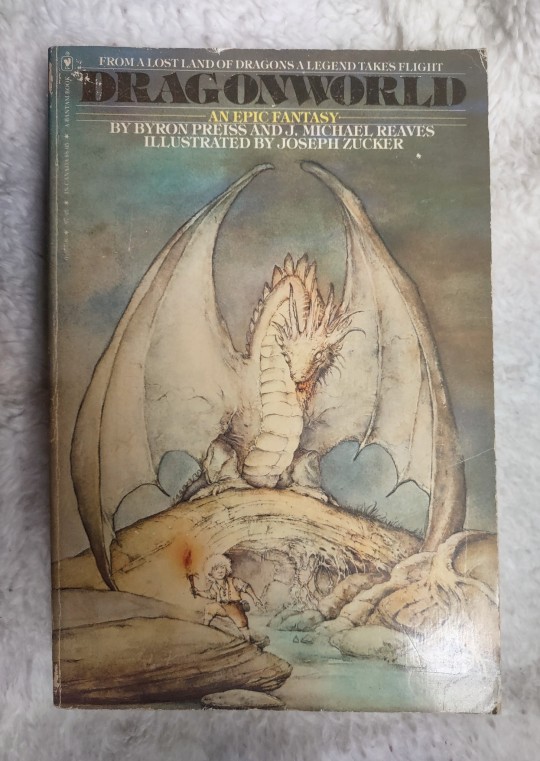

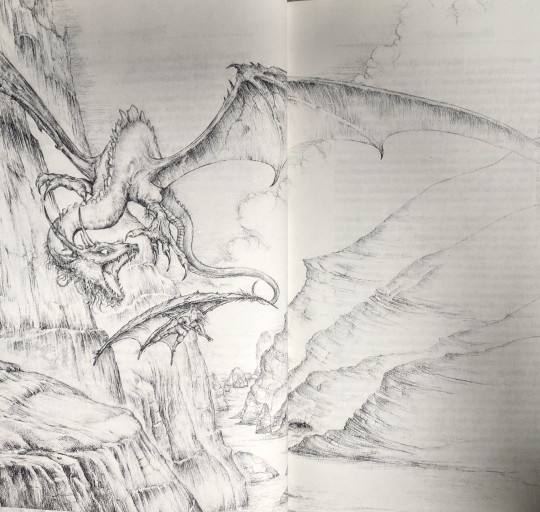
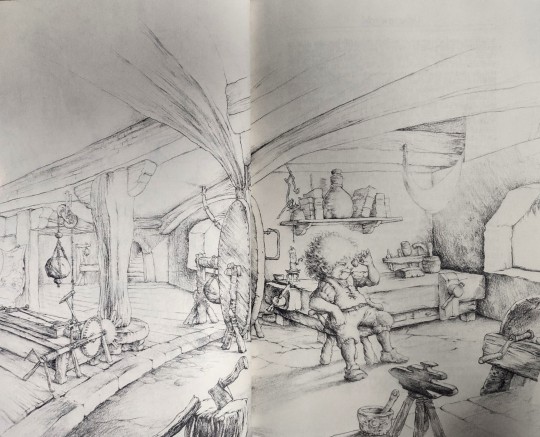
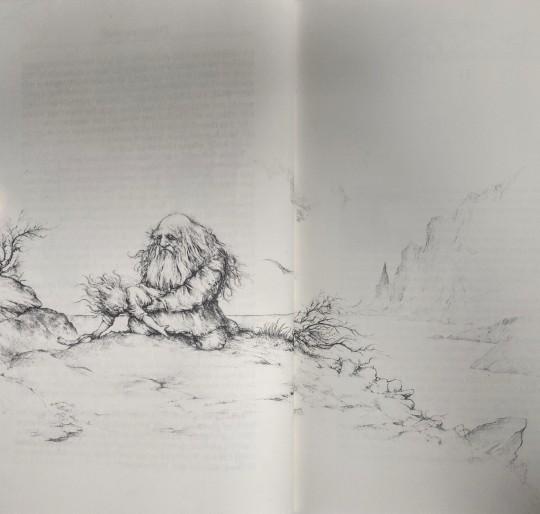

Dragonworld: An Epic Fantasy by Byron Preiss and Michael J. Reaves, illustrated by Joseph Zucker, published 1979.
#dragonworld#byron preiss#michael reaves#joseph zucker#dragons#fantasy illustration#vintage fantasy#vintage book covers
10 notes
·
View notes
Text
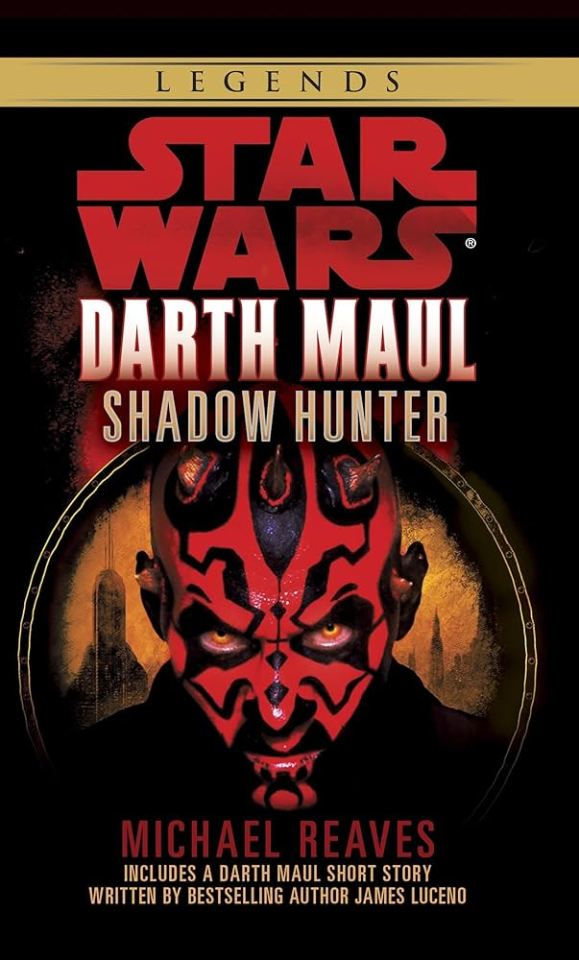
Star Wars: Darth Maul Shadow Hunter by Michael Reaves
Rating: ❤️❤️❤️❤️❤️
#Darth Maul Shadow Hunter#darth maul#star wars#shadow hunter#books#Michael Reaves#book recommendations#Star Wars: Darth Maul Shadow Hunter#book reviews
11 notes
·
View notes
Text

Spider-Lily!!
#lilypichu#LilyPichu fanart#spider-lily#it’s like the flower Lily#so it’s like a Lily lily but not Lily Lily#michael reaves#Michael is Doc Ock but not evil just for fun#I’m pretty semi proud of this#maybe the yellow-pink-blue on her suit glows and flashes like a party
17 notes
·
View notes
Photo
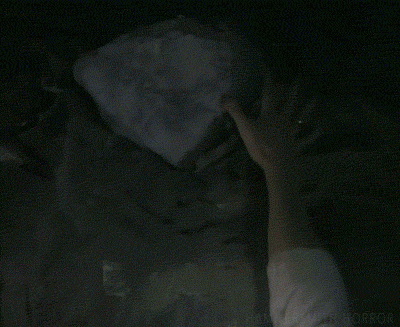
MONSTERS | Fools' Gold | S1E12 | 1989
#MONSTERS#Michael Reaves#Debbie Lee Carrington#Mary Cadorette#Greg Cannom#troll#turn to stone#bright light#good morning#monster suit#practical effects#transformation#80s horror#horror television#horror#Hammersmith Horror#horror anthology
79 notes
·
View notes
Photo
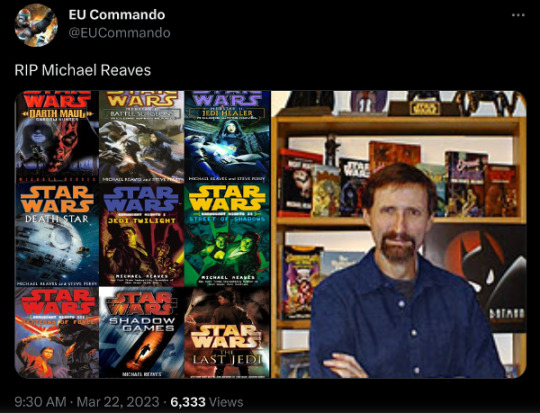
Michael Reaves 1950-2023
#Michael Reaves#RIP#Star Wars#Darth Maul - Shadow Hunter#Medstar#Death Star#Coruscant Nights#Shadow Games#The Last Jedi#Batman: The Animated Series
14 notes
·
View notes
Text
Book 90, 2023
Have you ever read something that you recognize isn't bad but /is/ a bad book? Welcome to "InterWorld" by Neil Gaiman and Michael Reaves, a book I will be keeping because I have hoarding tendencies. Since I own most of Gaiman's novels, it feels improper to get rid of this title. (It's the inverse of Orson Scott Card, where the author revealed himself to be so toxic I steadily pared down my collection until I was left with "Ender's Game", the object an anchor for my grade eight camping trip and the taste of fresh caught fish cooked over an open fire and eaten with fingers in cool-damp morning.)
"InterWorld" is the most 'let's try to scrape some kind of profit from the time sunk into this project by settling for this ill-fitting adaptation' I've ever encountered. We've all seen unaired TV pilot retooled was TV movie and I know there are self-conscious 'this sitcom pitch got turned down, maybe podcast?' examples out there, and I know old school webcomics that dropped the comic part when there was a falling out with the artist and tried to continue via text alone. The last is probably the closest to "InterWorld", probably because Gaiman and Reaves both had success doing the writing part of visual media (Gaiman's bibliography in that area is well known, while Reaves was head writer for Batman: The Animated Series and Gargoyles).
It's explicitly admitted in the book's endnote that "InterWorld" was the result of Gaiman and Reaves trying to produce something for tv executives that would make the premise for their series pitch easier to understand (this was before they unlocked the 'throw things into landfill for infinite tax benefit cheat code') and I'm not convinced they put that much time into making it a book-book for publication. There's a real sticks and glue feeling to "InterWorld" and you're expecting a house. Not a big fancy house, not a mansion, just a little default filler house. But you don't have to look at the sticks you were given for long before realizing 'aw shit man this is a repurposed boat'.
The idea of "InterWorld" is a multiverse middle grade adventure battle between extreme forces of magic/chaos and technology/order because what kid doesn't want robots /and/ dragons? There's an organization charged with keeping worlds from falling fully under the control of either side. The twist is that the organization is staffed entirely by versions of the same person from different worlds.
This is a genuinely cool idea and great for kids who aren't quite teenagers, giving Gaiman and Reaves a lot of avenues to explore different genders, cultures, species, just identity in general and how different circumstances can see the same seed growing into wildly varied plants. It's easy to imagine how interesting this could be.
In a visual medium.
Especially something animated, where you could create character designs allowing the viewer to immediately distinguish Main Character Joey from Girl Joey from Joey But Robot.
In writing "The Warrior's Apprentice", Lois McMaster Bujold wanted to name the love interest "Nile". Her protagonist? "Miles". Feedback on the proofreading and copyediting nightmare of a Miles and Nile in the same book saw "Nile" become "Elena".
Please enjoy imagining how frustrating an entire book full of J-name variant characters is, because it is the thing that marks "InterWorld" most clearly as something that should never have been a book and also just a constant little itching in my eye and brain.
Double-checking some things in writing this up reveals that Gaiman and Reaves did publish two sequels, well after the fact. I'm surprised because another thing that made the book feel unlike a book is that it finished not only with loose threads of plot dangling, but with the greatest implied conflict unresolved. A villain from the tech end of the spectrum wasn't even present and my reaction, on finishing the book, was 'well sure, you wouldn't have written the arcs of multiple seasons into this pitchbook, you'd have the establishing arc and maybe one or two bits of adventure after that'.
If I ever stumbled across the following books on the cheap I might pick them up, but I feel no compulsion to do so, and "InterWorld" remains on my shelf as a curio more than a book.
3 notes
·
View notes
Text
youtube
RIP Michael Reaves, for just so many reasons but also for being indirectly responsible for this bop.
#rip#michael reaves#batman tas#he man#heman#the real ghostbusters#my little pony#disney’s gargoyles#gargoyles#gargoyles cartoon#tmnt#dungeons and dragons#Youtube#animation#cartoons
11 notes
·
View notes
Text
Michael Reaves R.I.P.
Of the many, many memorable moments I shared with Michael Reaves, few better sum up the man than participating with him as he battled Fred Silverman and Hideo Takayashiki for the integrity of The Mighty Orbots.
You could well cite this as a quixotic quest, attempting to bring as much skill and intelligence to a Japanese / U.S. co-production that never gained the traction it should, a one season wonder that faded from the memory of all except the most dedicated animation fans.
Michael would certainly have been forgiven for not fighting to the last bloody inch to make the show as good as he possibly could, especially in the face of a Japanese co-story editor who felt dishonored at having to share duties with an American and then having to face off against Silverman, a network executive best described as the Donald Trump of television.
Takayashiki could speak English and Michael knew this, but it was a point of honor to him not to communicate directly with any American writers.
We had a trio of female Japanese interpreters working for TMS at the time, and one of them drew the unpleasant short straw of having to translate the story sessions between Michael and Takayashiki.
The sessions, which took place in the TMS conference room with the Japanese and Americans sitting on opposite sides of a long executive table only slightly shorter than the flight deck of the IJN Hiryū, would typically start with Takayashiki wanting some change to bring the story being discussed more in line with Japanese sensibilities.
The poor lady translator would relay this in a soft, conciliatory tone.
Michael, knowing the series’ success hinged on it being a hit in the U.S., would resist, testily citing why the suggested change didn’t fit with the way Americans liked their cartoons.
The poor lady translator would relay his response in a soft, conciliatory
tone, even though Takayashiki understood what Michael said.
Takayashiki would regretfully (or so the translator said) disagree with Michael. Michael -- who like myself was a disciple of the Harlan Ellison school of fight long, fight loud, fight hard for your story – would respond somewhat…ah…forcefully.
The poor lady translator would relay this in a soft, conciliatory tone.
Takayashiki would reply in a tone somewhat akin to Toshiro Mifune wading into a yakuza gang.
…and the poor lady translator would relay this in a soft, conciliatory tone.
(Little wonder this translator quit mid-season to serve as a translator for an international commission attempting to hammer out a fishing treaty between the U.S., Russia, and Japan; that must have seemed awfully relaxing after dealing with Orbots story sessions!)
And if you thought that was fun, hoo-boy! Stick around for the second part of our doubleheader, a story session with Fred Silverman.
Silverman was a bullshit artist who catered to the lowest common denominator but for the first part of his career possessed enough savvy to find talented creators and not interfere too much.
He frequently repeated his catchphrase to anyone within earshot: “Sell the sizzle, not the steak.”
He didn’t like it when I pointed out that selling the sizzle was fine -- but you still needed to deliver a steak.
Silverman’s star was not merely setting at the time of The Mighty Orbots, it had collapsed into a black hole. Despite being the only person to head all three networks, after his success at CBS and ABC, he made a gawdawful mess of NBC and left the peacock to “go into independent production.”*
None of Silverman’s indie-prods ever caught fire (though a few of them should and their cast and crews would have willing supplied the matches). The Mighty Orbots was Silverman’s attempt to prove he was still the kid-vid genius who okayed Scooby-doo, Where Are You? and launched Joe Ruby and Ken Spears studio.
Perhaps it would have been better if we used translators in our Silverman meetings; speaking the same language certainly seemed futile.
The epitome of this was an epic battle Michael and I had with Silverman over how to get rid of a magnetic monster in one episode.
“I wanna throw it in a glacier,” Silverman said.
That wouldn’t work, Michael and I pointed out. Intense cold strengthens a magnetic field, intense heat destroys it. “Throw it in a volcano instead,” Michael said.
“No, I want to throw it in a glacier,” Silverman said.
Now some of you may wonder why fight over this minor point.
I mean, it’s only a dumb children’s show, right?
Wrong.
There’s a saying in the music biz that if you don’t play every gig as if it were a sold out gig, you’ll never play a sold out gig.
Michael (and myself, and Steve Gerber, and Marty Pasko, and Flint Dille, and many of the other animation writers of our generation) would never short change our audience no matter how young they might be.
We fought long and hard to make our scripts as good as they could possibly be, pushing the format bit by bit, inch by inch, edit by edit a little further along the path.
We may have been the despair of the producers and studios who hired us, but with no false modesty our efforts paid off in shows that people remember fondly to this day, shows that made groundbreaking shows of the 1990s and 2000s easier to fight for.
Those screaming arguments Michael fought with Silverman and others to keep the integrity of his scripts paid off, if not for him then certainly for the shows he wrote for.
Case in point: Dungeons & Dragons.
Michael wrote several of the best episodes of the show, which by Saturday morning standards of that era was a big hit, enjoying three seasons.
But when it was cancelled without wrapping up the main quest (i.e., the kid heroes finding their way back into the real world), Michael took it upon himself to write “Requiem”, a finale episode he made available to anyone who wanted to read it (eventually it was recorded by fans as an audio drama and that recording turned into a fan-imation by using scenes from other episodes).
Michael fought for writers’ rights and was instrumental in a couple of attempts to break animation writers away from the Motion Picture Screen Cartoonists and into either the Writers’ Guild or, when that failed, to start an Animation Writers Guild. He wrote / co-wrote / edited nearly 30 books, dozens of short stories, three feature films, plus more animation than IMDb gives him credit for.
I tried to recruit him for G.I. Joe but he refused, saying his action-adventure cred he couldn’t bring himself to write a show that glorified military force.
We respected him for that, and got him to write for Transformers, Jem, and My Little Pony.
He was a prickly sort, no denying that, but he was also the kind of guy you could trust to have your back in a story conference or a bar fight. He was married for several years to Brynne Chandler, a talented writer and editor on her own, and for a while they were happy. Among the children they had is Mallory Reaves, who continues the family tradition of writing and editing.
The end of their marriage and Michael’s subsequent diagnosis with Parkinson’s did a lot to simmer him down.
As Harlan himself demonstrated, you can’t roar through life full tilt 24 / 7 without burning out eventually. Michael’s personal situation and health issues didn’t daunt his creative endeavors, but they sure took a lot of piss and vinegar out of him.
We stayed in touch as he went through a prolonged period of couch surfing. He remained creative as long as he could operate a keyboard, but the Parkinson’s deprived him of speech.
The last time I saw him was at the Motion Picture home where a producer staged a table read for a new screenplay Michael had written. He could barely raise his voice above a whisper at that point.
He remained online for a few years after that, but the last thing he wrote on Facebook was a brief mention of our mutual friend Marty Pasko’s death. After that he put up a few links, but apparently even that become too much effort.
There are a few people in the industry that I’ve felt a special kinship with, and Michael was one of them.
It hurts to realize he’s gone.
© Buzz Dixon
* If Daily Variety reports you’re going into independent production, it means you’re fired. If they report you’re going to write a book, it means you’re really fired.
8 notes
·
View notes
Text

#Gargoyles the Movie The Heroes Awaken#Saburo Hashimoto#Takamitsu Kawamura#Kazuo Terada#Eric Luke#Michael Reaves#90s
51 notes
·
View notes
Text
Back in the Temple, she had once listened to Mace Windu tell a group of students that killing somebody was easy-you could do it with a single swipe of your lightsaber. But living with the knowledge that you had killed somebody would change you for-ever. The Jedi Master had been right-it had certainly changed her. Killing was not a thing you did lightly, not if you had any kind of compassion, or even minimally decent moral and ethical codes. Sometimes, to protect the innocent, or one’s own life, justice and survival demanded a Jedi strike with enough power to lay an attacker low. But the fact that it was necessary did not absolve you from seeing the faces in your dreams, or hearing the anguished cries of the fallen late in the silent night. [...]
The Force allowed you to be a powerful fighter, but it also leavened your impulse to do violence. When you knew what you could do with your lightsaber, knew how deadly you were, it gave you pause. Because you could do a thing did not mean that you should... She shook her head.
—Medstar I: Battle Surgeons, Michael Reaves
8 notes
·
View notes
Text
330. Michael Reaves, Karl Geurs - Dungeons & Dragons, Episode 16: City at the Edge of Midnight (September 22, 1984)
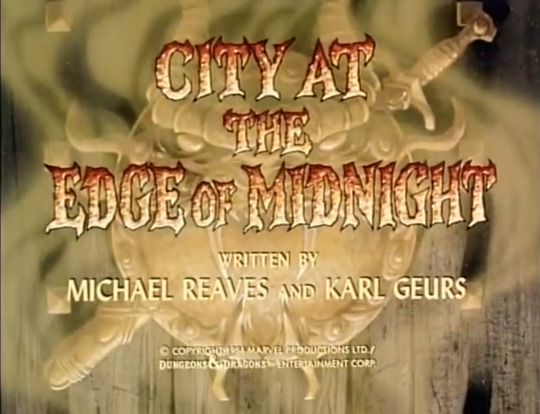
Last episode the Dungeon Master left us with a cliffhanger about his relation with Venger, but this episode we don't really get any more news about that. Fortunately, however, we do get a fun story so you can let the curiosity go for a while.

In this episode the gang meets Ramoud, a kind of Arabian Nights style character who owns a caravan and is looking for his daughter Aisha. In the process the gang will learn that Aisha isn't the only girl that is missing, but other kids including ones from our world have also been taken.

With a couple of freaky sequences, particularly around the titular city, inhabited by demons and enslaved children and a scary monster somewhat reminiscent of D&D's Gnoll-like demon Yeenoghu this is a really fun episode. The series does seem to go from strength to strength!

#adnd#dnd#ttrpg#ad&d#d&d#dnd art#dungeons and dragons#dungeons & dragons#michael reaves#karl geurs#80s animation#retro animation#animation
8 notes
·
View notes
Text

Star Trek: The Next Generation, 105 (Oct. 24, 1987) - "Where No One Has Gone Before"
Written by: Diane Duane & Michael Reaves
Directed by: Rob Bowman
The Breakdown
On Starfleet's orders, an Engineer named Kosinski is sent to improve the Enterprise’s warp efficiency with the aid of his mysterious assistant. Kosinski immediately reveals himself to be quite the pompous dickhead with a massive ego, but orders are orders, so Picard and Co. induldge him. The first test goes so unbelievably well that the Enterprise finds itself in another Galaxy, which everyone acknowledges is a bit too far to make a return trip using standard warp speeds alone.
Excitement over this new technological achievement is soon quelled when Kosinski finds himself unable to repeat the experiment, leaving the Enterprise potentially stranded in the middle of nowhere. It turns out that Kosinski was actually just an idiot the entire time, and it was actually his assistant who made the jump, on account of being a ‘traveller’ with special abilities that allow him go wherever he wants, with few limitations. Unfortunately, exhaustion just happens to be one one such limitation; and this dude is plenty exhausted after the jump.
Wesley has been the only person up to this point to notice the Traveler, and has tried to bring it to Picard’s attention, but everyone keeps getting too irritated by Wesley’s “Wesleyness” to bother listening to him. But once Picard IS willing to listen, he pays the Traveller a visit where the mysterious visitor explains that he is a) from a group of advanced space jumping folk, and b) that Wesley is super special and that he should be encouraged in his specialness, but never told about it overtly (apparently he needs to figure it out on his own, for reasons that are definitely not arbitrary). And with that, the Traveller agrees to one last attempt towards bringing everyone home. It almost fails again, but Wesley is evidently able to transfer some of his special-boy-energy to aid the Traveller before he disappears-possibly-to-death. With everyone home safe, Picard decides to let Wesley become an acting ensign, to start him on his chosen-one journey toward specialness.
The Verdict
This may be the first episode (chronologically speaking). That I can honestly say I like. Oh, there are still plenty of hokey and down-right-cringey moments, also Wesley is more involved than I care for, but at it’s core this is a solid little episode. The Traveler and his story are both intriguing, and there’s some solid groundwork that’s established seemingly in the service of Picard becoming less of an asshole to children (and hopefully also just in general). I can understand why others would rate this lower, but with Star Trek one has embrace a little campiness, and an embarrassing dose of optimism; That being said, ‘Where No One Has Gone Before’ very closely pushes the limit of what I can tolerate for both.
3 stars (out of 5)
Additional Observations
ST: Voyager is basically the same plot + 7 seasons.
I can’t believe I’m going to say this, but I actually don’t despise Wesley this time around. I mean yeah he’s still the worst (sorry Wil Wheaton), but his character serves the plot, and he legitimately does nothing wrong. Indeed, he actually helps, all while enduring a lot of abuse. I came very close to rooting for him.
At the same time, the way the crew bullies Wesley is also hilarious, if only because it goes completely unaddressed. It’s like the show is trying to gaslight the audience into doubting that it’s even happening.
#star trek the next generation#tng season 1#Where No One Has Gone Before#retro review#star trek review#star trek#star trek tng#galaxy class#traveller#80s tv shows#80s tv series#tv show review#space exploration#wesley crusher#diane duane#michael reaves#rob bowman#episodic nostalgia
2 notes
·
View notes
Text
Today is November 2, the anniversary of the extra-dimensional squid attacking New York at the end of Watchmen, and we as a society don’t talk enough about how the creature appeared in the 1988 episode of Teenage Mutant Ninja Turtles, “Splinter no More”.

In the episode, a one eyed, tentacled monster with a beak emerges from a portal to another dimension. In Watchmen, a one eyed, tentacled monster with a beak (allegedly) emerges from a portal to another dimension.

The episode aired 13 months after Watchmen’s conclusion, so it’s plausible that it could be an immediate reference. I remember seeing the episode as a kid and thinking the monster must be a reference to something, it was so specific, and when I read Watchmen it blew my mind.
#watchmen#teenage mutant ninja turtles#tmnt#splinter no more#institute for spatial studies#squid monster#michael reaves#brynne stephens#fred wolf#dave gibbons#alan moore#john higgins#tmnt 1987#teenage mutant ninja turtles 1987
7 notes
·
View notes